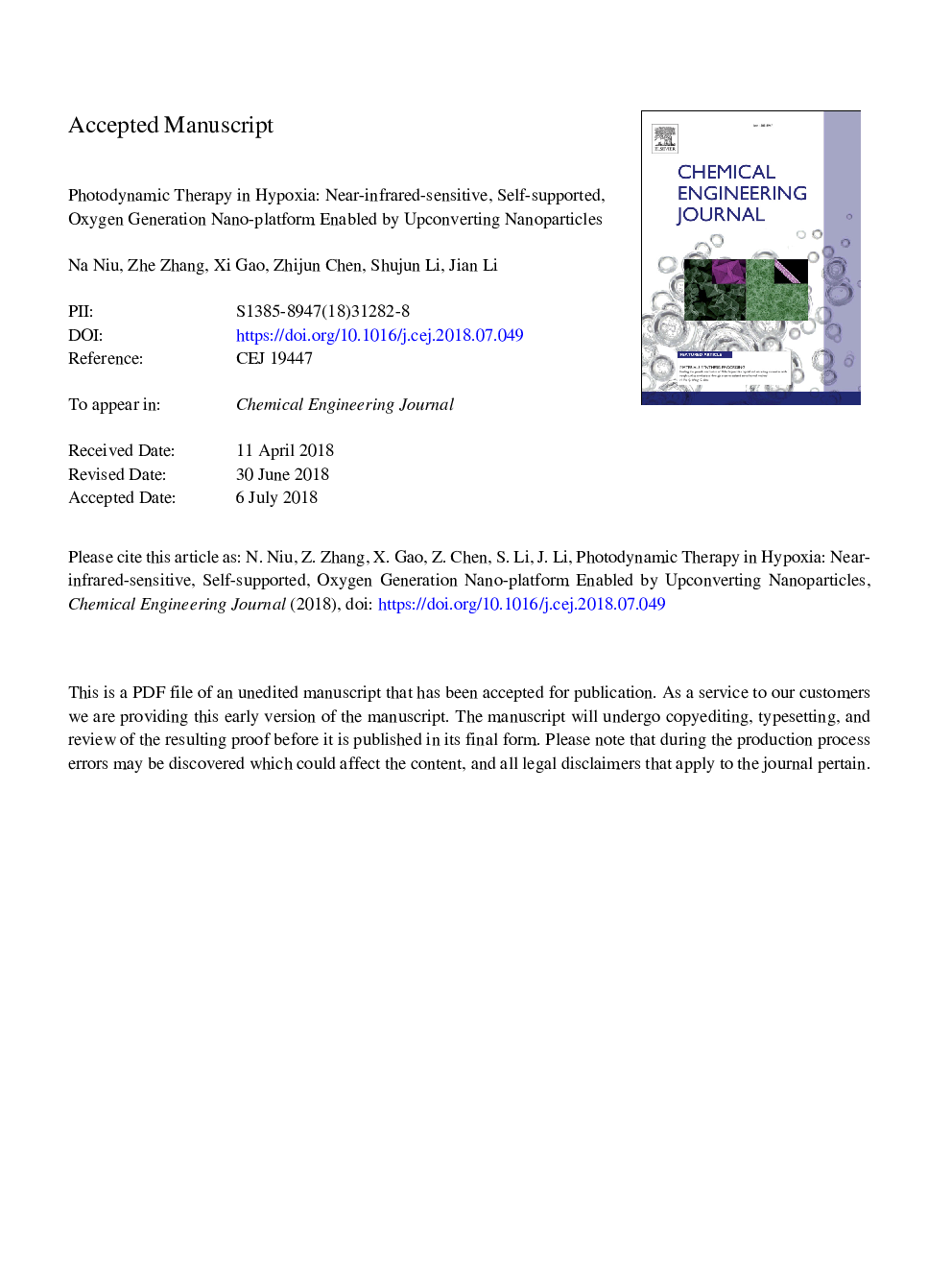| Article ID | Journal | Published Year | Pages | File Type |
|---|---|---|---|---|
| 6578204 | Chemical Engineering Journal | 2018 | 32 Pages |
Abstract
Photodynamic therapy (PDT) shows great potential in anti-cancer therapy. The efficiency of PDT is greatly limited by the hypoxia environment in tumors. However, current methods developed to conquer this problem did not accurately produce oxygen for PDT of a certain amount and in a certain position, which could bring a potential risk to normal cells and tissues. Here, upconverting nanoparticles (UCNPs) and gold oxide (Au2O3) were integrated to prepare an efficient, self-supported, oxygen generation nano-platform in a hypoxia environment. Upon a near-infrared (NIR) laser, Au2O3 could produce oxygen assisted by UCNPs through the fluorescence resonance energy transfer (FRET) effect. This light-controlled, self-supported oxygen generation system effectively provided oxygen for the as-loaded photosensitizer chlorin e6 (Ce6) in PDT upon NIR irradiation, which enhanced the inhibition effect of the tumor cells, in both in vitro and in vivo experiments. The present strategy of light-induced, oxygen-producible promoted PDT may solve the long-standing contradiction between the oxygen-dependent working mechanism of PDT and hypoxia microenvironments in tumor cells.
Keywords
Related Topics
Physical Sciences and Engineering
Chemical Engineering
Chemical Engineering (General)
Authors
Na Niu, Zhe Zhang, Xi Gao, Zhijun Chen, Shujun Li, Jian Li,
